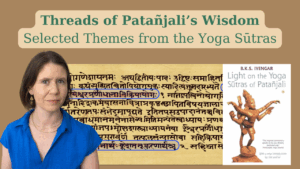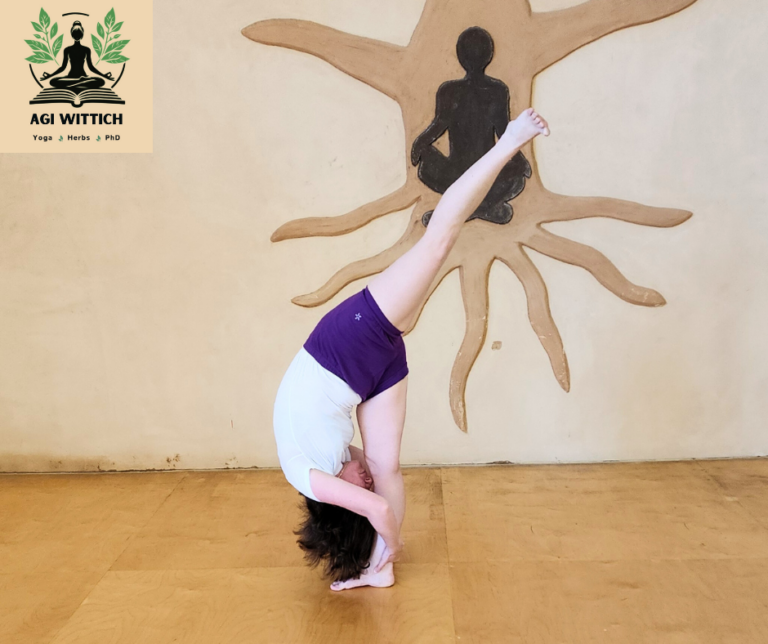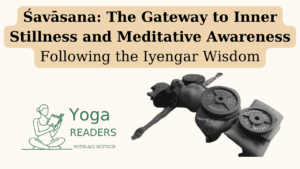
Threads of Patanjali’s Wisdom – Online Course
A course of selected themes from the Yoga Sutras with Dr. Agi Wittich The Yoga Sūtras of Patañjali are the philosophical heart of yoga.

In the therapeutic application of Iyengar yoga, particularly within trauma-informed contexts, the concept of the “window of tolerance” emerges as a crucial framework for understanding and facilitating psychological resilience. I find it very helpful. This theoretical construct, initially developed in trauma studies, describes the optimal arousal zone within which an individual can effectively process and respond to the varying demands of daily life. The significance of this concept becomes particularly salient when applying it in trauma-informed Iyengar yoga methodology. Let me elaborate:
The window of tolerance represents a psychophysiological state in which an individual maintains the capacity for emotional regulation and cognitive processing. When functioning within this window, one can effectively engage with both internal and external stimuli while maintaining adaptive responses to environmental challenges. Let me be clear: this does not mean to deliberatly trigger someone or to cause pain. For those who have experienced trauma, this window often becomes constricted, leading to increased vulnerability to states of either hyperarousal or hypoarousal. These states manifest as heightened anxiety and physiological activation in the case of hyperarousal, or emotional numbness and disengagement in instances of hypoarousal. In other words, this heps with emotional regulation.
So how does the methodological framework of Iyengar yoga offer to expand this window of tolerance? First, through carefully structured practice sequences. The precision and adaptability inherent in the Iyengar tradition create an environment conducive to therapeutic intervention. Thus, through the systematic application of props and carefully calibrated pose sequences, practitioners can safely explore the boundaries of their comfort zones while maintaining a sense of agency and control. Of course, other factors help here with the sense of safety and agency, such as the rapport between teacher and student, including trust and positive experiences.
Also, the use of props in Iyengar yoga transcends mere physical support, serving as psychological anchors that facilitate a sense of safety and stability. Yoga props, including blocks and chairs, but also using the floor and the wall, create a tangible foundation from which practitioners can explore challenging sensations and emotions while remaining within their window of tolerance. So, the careful attention to proper alignment and support structures enables individuals to maintain presence and engagement even when confronting challenging physical or emotional states.
Moreover, duration management in asana practice serves as another critical element in this therapeutic approach. By gradually extending the length of time spent in poses, practitioners develop increased capacity for sustaining presence during periods of challenge or discomfort. This progressive exposure occurs within a carefully controlled environment, allowing for the development of new neural pathways associated with resilience and self-regulation.
The integration of reflective practice forms a crucial component of this methodology. Prior to each pose and also following each pose, practitioners engage in systematic observation of their physical, emotional, and psychological responses. I would often ask my students, “Observe yourself; how do you feel? What do you sense? What are you aware of?”. And this metacognitive process enhances body awareness and facilitates the development of increasingly refined self-regulatory capabilities. Such reflection enables practitioners to track their progress and identify patterns in their responses to various stimuli.
As I see it, the implications of this work extend well beyond the immediate context of yoga practice. The skills developed through this methodological approach generalize to various life contexts, enhancing practitioners’ overall capacity for emotional regulation and stress response management. This transfer of learning represents a significant therapeutic outcome, contributing to improved functioning in daily life situations.
I explain to my students that the process of expanding one’s window of tolerance through yoga practice requires a nuanced understanding of the interaction between physical practice and psychological response. I believe that teachers must maintain awareness of the delicate balance between challenging practitioners and maintaining their sense of safety and control. This balance is achieved through careful attention to individual needs and responses, along with ongoing adjustment of practice parameters.
It is essential to note that this approach to expanding the window of tolerance represents a gradual, systematic process rather than a linear progression. Progress often occurs in subtle increments, with occasional periods of apparent regression that should be understood as natural aspects of the healing process. The emphasis remains on sustainable development rather than rapid transformation.
From an academic perspective, this integration of trauma theory with traditional yoga methodology offers rich opportunities for further research and theoretical development. The observable outcomes of this approach suggest potential applications in various therapeutic contexts, while raising important questions about the mechanisms through which such changes occur. Moreover, the application of window of tolerance theory within trauma-informed Iyengar yoga practice represents a sophisticated synthesis of contemporary psychological understanding with traditional yogic methodology. This integration offers practitioners a structured approach to developing increased resilience and self-regulatory capacity. As this field continues to evolve, ongoing research and theoretical development will likely yield additional insights into the mechanisms and applications of this therapeutic approach.
In conclusion, the careful application of trauma-informed principles within the Iyengar yoga tradition offers a promising pathway for expanding the window of tolerance. Through systematic practice and careful attention to individual needs, practitioners can develop enhanced capacity for emotional regulation and stress response management. This work contributes to the broader field of trauma studies while offering practical applications for individual healing and growth.

A course of selected themes from the Yoga Sutras with Dr. Agi Wittich The Yoga Sūtras of Patañjali are the philosophical heart of yoga.

In a recent Yoga Readers session, Dr. Lois Steinberg opened her teaching archives and personal memories, sharing stories that span four decades of study

In the vast and intricate repertoire of yoga āsanas (postures), Śavāsana (Corpse Pose) holds a unique and profoundly significant position. Often superficially perceived as
Agi Wittich is a yoga practitioner since two decades, and is a certified Iyengar Yoga teacher. Wittich studied Sanskrit and Tamil at the Hebrew University of Jerusalem, Israel, completing a PhD with a focus on Hinduism, Yoga, and Gender. She has published academic papers exploring topics such as Iyengar yoga and women, the effects of Western media on the image of yoga, and an analysis of the Thirumanthiram yoga text.